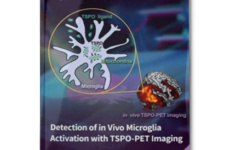 Background
Background
Some reports show that it is possible to isolate immature oocytes from human ovarian tissue retrieved by a cortex biopsy or ovariectomy of non-stimulated ovaries and mature them in vitro.
The mature oocytes can be vitrified and stored for in vitro fertilization, which, along with ovarian tissue cryopreservation, is mostly practiced in young cancer patients to preserve their fertility. There is much less data on this new approach in women with a natural ovarian insufficiency, which can be caused by different factors, including viral infection.
In this case report this advanced methodology was used in a young patient suffering from ovarian insufficiency which was possibly associated with Epstein-Barr virus and infectious mononucleosis (glandular fever).
Methods
This case report included a 27-year-old patient who attended our infertility clinic because of ovarian failure as a part of autoimmune polyendocrinopathy that occurred after Epstein-Barr virus infection, which has rarely been reported until now.
Although antral follicles were observed in her ovaries by ultrasound monitoring, she was amenorrhoeic with menopausal concentrations of follicle-stimulating hormone (FSH) and without mature follicles. Therefore, a small biopsy of ovarian cortex tissue was performed using laparoscopy to retrieve immature oocytes..
Results
Four immature, germinal vesicle (GV) oocytes were found and removed from tissue, denuded mechanically by a pipette, and matured in vitro in a maturation medium with added FSH and hCG as well as in co-culture with cumulus cells, which were retrieved by their denudation.
Three oocytes matured in vitro to the metaphase II (MII) stage and were vitrified for in vitro fertilization along with ovarian tissue cryopreservation.
Conclusion
Our results show that Epstein-Barr infection is possibly associated with autoimmune ovarian failure. The devastating impact on fertility in such disorder can be successfully avoided by in vitro maturation of oocytes from excised ovarian tissue.
Irma Virant-KlunEmail and Andrej Vogler
Reproductive Biology and Endocrinology2018
DOI: https://doi.org/10.1186/s12958-018-0350-1















